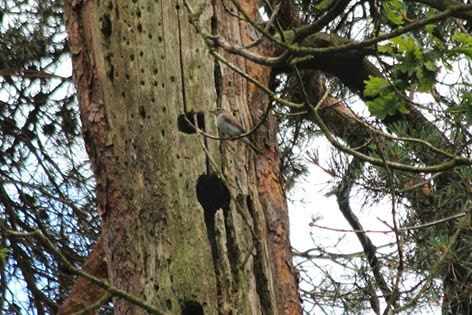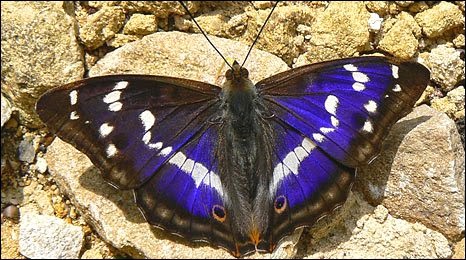Wydcombe Estate, IOW
Sue and I made the long trip to the south side of the Isle of Wight to "twitch" this very special bird.
Our efforts were well rewarded with superb views of two adults on the telephone cables in front of the houses 200 metres away at the opposite end of the field.
 |
| Bee-eater Library picture |
 |
| Bee-eater flying overhead Library picture |
 |
| Bee-eater Library picture |
About 40 other birders had visited the site earlier in the day but, thankfully, the National Trust were running a round the clock vigil so observers were kept at a sensible distance from the star attractions. Below are some of their published pictures
 |
| IOW Bee-eater Ian Ridett National Trust |
 |
| IOW Bee-eater Ian Ridett National Trust |
 |
| IOW Bee-eaters Ian Ridett National Trust |
A pair of bee-eater birds, native to
southern Europe, has been discovered nesting on the Isle of Wight.
The adult birds have been seen delivering food into the nest which indicates the eggs have hatched
"The hot temperatures since spring have helped an above average arrival of bee-eaters, with more than 10 seen along the south coast since May."
The last time a pair was recorded breeding in the UK was in a quarry in County Durham in 2002 when two young successfully fledged.
Before that, it was in 1955 when two pairs raised seven young in a Sussex sandpit.
The adult birds have been seen delivering food into the nest which indicates the eggs have hatched, Mr Ridett added.
However, the chicks are not expected to leave their underground nest site for about two weeks, so the number of chicks hatched is still not known.
Bee-eaters can burrow up to 10ft (3m) and usually lay clutches of four to nine eggs.
Matthew Oates, National Trust nature and wildlife expert, said: "The bee-eater is arguably the most stunning bird on the British list - it looks tropical.
"As our climate changes it's likely that we'll see increasing numbers of new visitors on our shores."
Addition to UK 2014 Bird List:
Bee-eater (243)
Addition to UK 20 Lifetime Bird List:
Bee-eater (263)













.jpg)






